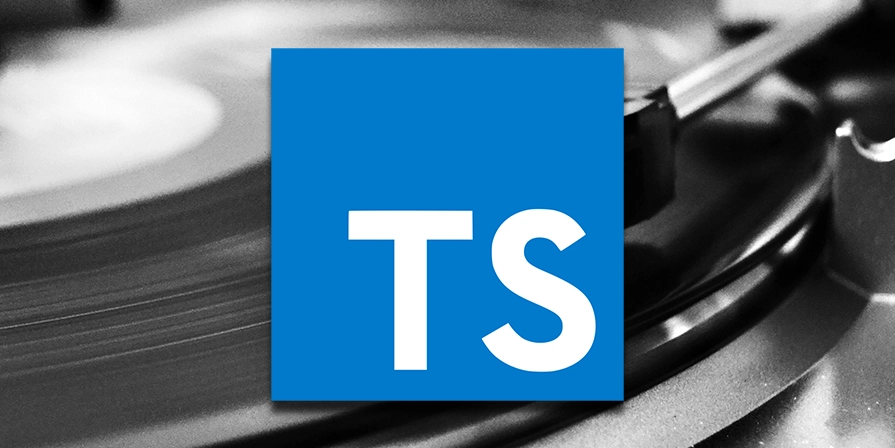15 Free Status Page Tools in 2025
If you're building something even mildly critical (SaaS, API, web app, you name it), having a status page is no longer optional. Downtime happens. Servers break. APIs fail. And when that happens, your users deserve transparency. With the average hour of downtime costing $300K (Statista), a clear and reliable status page can save your reputation and keep your users in the loop. Luckily, you don’t have to spend a dime to get started. Here’s a breakdown of 15 free status page tools (hosted and open source) that offer free plans or are entirely free to use in 2025. Whether you're a solo dev, a startup founder, or an SRE building out infra for the first time, there’s something in here for you. We did not mention popular Downdetector, which only offers a status page on their Enterprise plan. Another popular option is UptimeRobot, but they discontinued their free plan. Hosted Status Page Tools with Free Plans These tools manage the infrastructure and updates for you. You just sign up and go. 1. StatusGator StatusGator is more than a status page, it's also an aggregator of 5,000+ third-party service status pages. You can show both your own service uptime and your dependencies (like AWS or GitHub). StatusGator’s Early Warning Signals feature alerts users about outages before they appear on official status pages. For example, in March 2025, StatusGator detected issues with BitBucket and Mailgun 10 minutes ahead of their official reports and identified incidents with Shopify and Framer a full hour in advance. The free plan includes: Public status page 3 monitors (can be external or internal services) Status aggregation from 5,000+ SaaS services Notifications (Slack, Discord, Email) 1-month incident history Embeddable widget API access Early Warning Signals Pros: Multi-provider monitoring, signals of upcoming outages Cons: No private status page on a free plan. 2. OpenStatus OpenStatus makes it easy to create sleek public or private status pages in seconds, allowing you to communicate incidents, planned maintenance, and real-time updates clearly and professionally. With support for custom domains, subscriptions, and detailed incident timelines, it empowers dev teams to build trust with users through transparency and timely communication. On the free Hobby plan, OpenStatus provides essential features. You get 10-minute interval monitoring for 1 service, access to 6 regions, 14 days of data retention, and 30 on-demand synthetic API checks per month. The plan also includes one customizable status page with maintenance announcements, uptime visibility, and basic alerts via Slack, Discord, Email, Webhook, and ntfy.sh. It supports one team member and a single notification channel. Pros: Designed for speed and simplicity Cons: Only a single notification channel on the free plan. 3. Hyperping Hyperping offers four plans, including a free tier that comes with a basic status page. Even on the free plan, users get valuable features like 3-minute monitoring intervals, SSL checks, weekly reports, and alerts via email, SMS, and Slack. Up to 5 monitors are available with this basic status page. Pros: SSL checks, weekly reports Cons: Limited integrations and styling 4. Atlassian Statuspage Statuspage.io by Atlassian is a leading hosted status page solution designed to streamline downtime communication. It supports public, private, and audience-specific pages, making it suitable for both customer-facing and internal use. Their free plan includes public pages with limited components — up to 100 subscribers, 25 components, two metrics, and API access. Pros: Trusted brand, decent features Cons: Subscriber limit, only 2 team members 5. Better Stack Better Uptime (now part of Better Stack) is a sleek and customizable monitoring and status page solution. It lets you share real-time metrics on your own domain and integrates easily with tools like Prometheus, Zabbix, AWS, and Azure. The provider comes with a second-by-second incident timeline and 5 free status pages. It supports smart incident merging and flexible escalations and works great across devices. Better Uptime offers a free plan with core features and a pay-as-you-go model for more advanced needs. Pros: Fast checks, Slack/MS Teams integration Cons: Limited APIs and customization 6. Cronitor Unique for its cron job monitoring feature. Great for backend-heavy apps. Cronitor offers three pricing tiers, with the Hacker plan available for free. It includes useful features like cron job monitoring, website checks, and heartbeat/API monitoring, along with instant alerts, scheduled reports, and 5-minute check intervals. While it’s limited in customization and monitoring volume, it includes cron monitoring, which is rarely found in free status page software. Pros: Cron + uptime monitoring Cons: Very limited styling on the free plan 7. Instatus Slick UI and unlimited
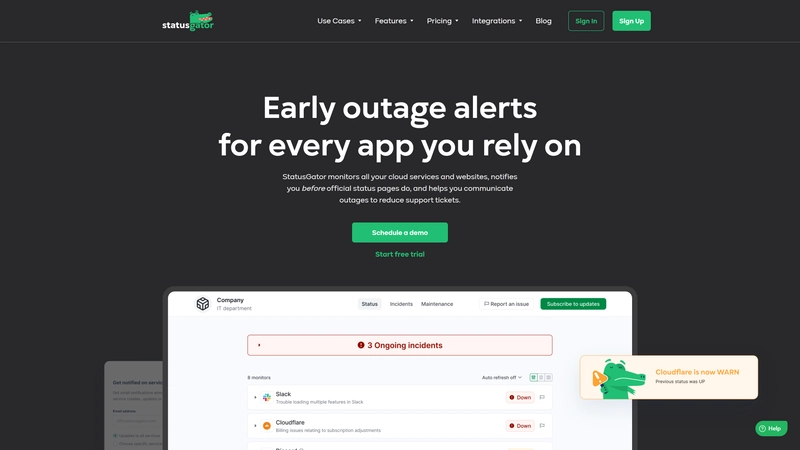
If you're building something even mildly critical (SaaS, API, web app, you name it), having a status page is no longer optional.
Downtime happens. Servers break. APIs fail.
And when that happens, your users deserve transparency. With the average hour of downtime costing $300K (Statista), a clear and reliable status page can save your reputation and keep your users in the loop.
Luckily, you don’t have to spend a dime to get started. Here’s a breakdown of 15 free status page tools (hosted and open source) that offer free plans or are entirely free to use in 2025.
Whether you're a solo dev, a startup founder, or an SRE building out infra for the first time, there’s something in here for you. We did not mention popular Downdetector, which only offers a status page on their Enterprise plan. Another popular option is UptimeRobot, but they discontinued their free plan.
Hosted Status Page Tools with Free Plans
These tools manage the infrastructure and updates for you. You just sign up and go.
1. StatusGator

StatusGator is more than a status page, it's also an aggregator of 5,000+ third-party service status pages. You can show both your own service uptime and your dependencies (like AWS or GitHub).
StatusGator’s Early Warning Signals feature alerts users about outages before they appear on official status pages. For example, in March 2025, StatusGator detected issues with BitBucket and Mailgun 10 minutes ahead of their official reports and identified incidents with Shopify and Framer a full hour in advance.
The free plan includes:
- Public status page
- 3 monitors (can be external or internal services)
- Status aggregation from 5,000+ SaaS services
- Notifications (Slack, Discord, Email)
- 1-month incident history
- Embeddable widget
- API access
- Early Warning Signals
Pros: Multi-provider monitoring, signals of upcoming outages
Cons: No private status page on a free plan.
2. OpenStatus
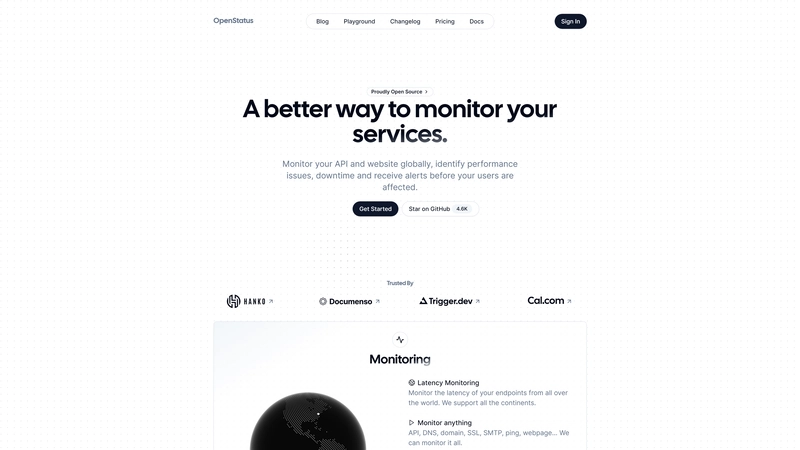
OpenStatus makes it easy to create sleek public or private status pages in seconds, allowing you to communicate incidents, planned maintenance, and real-time updates clearly and professionally.
With support for custom domains, subscriptions, and detailed incident timelines, it empowers dev teams to build trust with users through transparency and timely communication.
On the free Hobby plan, OpenStatus provides essential features. You get 10-minute interval monitoring for 1 service, access to 6 regions, 14 days of data retention, and 30 on-demand synthetic API checks per month.
The plan also includes one customizable status page with maintenance announcements, uptime visibility, and basic alerts via Slack, Discord, Email, Webhook, and ntfy.sh. It supports one team member and a single notification channel.
Pros: Designed for speed and simplicity
Cons: Only a single notification channel on the free plan.
3. Hyperping

Hyperping offers four plans, including a free tier that comes with a basic status page.
Even on the free plan, users get valuable features like 3-minute monitoring intervals, SSL checks, weekly reports, and alerts via email, SMS, and Slack. Up to 5 monitors are available with this basic status page.
Pros: SSL checks, weekly reports
Cons: Limited integrations and styling
4. Atlassian Statuspage
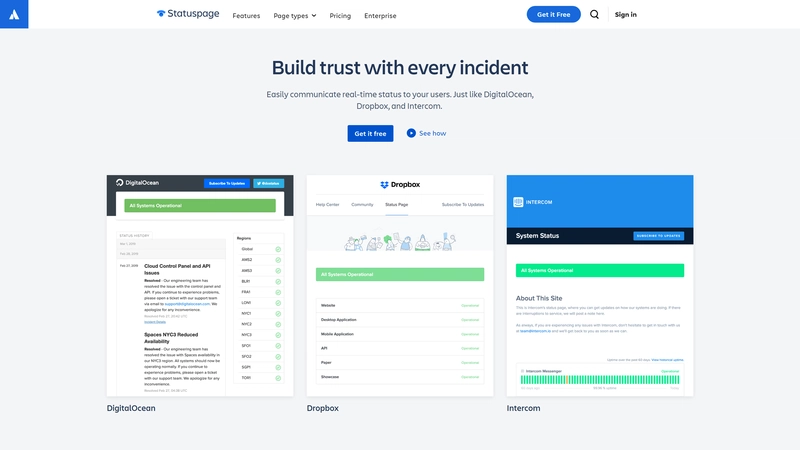
Statuspage.io by Atlassian is a leading hosted status page solution designed to streamline downtime communication. It supports public, private, and audience-specific pages, making it suitable for both customer-facing and internal use.
Their free plan includes public pages with limited components — up to 100 subscribers, 25 components, two metrics, and API access.
Pros: Trusted brand, decent features
Cons: Subscriber limit, only 2 team members
5. Better Stack
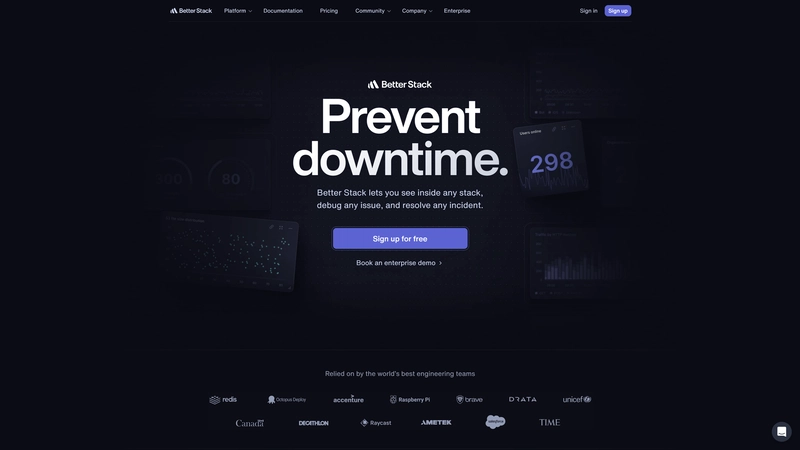
Better Uptime (now part of Better Stack) is a sleek and customizable monitoring and status page solution. It lets you share real-time metrics on your own domain and integrates easily with tools like Prometheus, Zabbix, AWS, and Azure.
The provider comes with a second-by-second incident timeline and 5 free status pages. It supports smart incident merging and flexible escalations and works great across devices. Better Uptime offers a free plan with core features and a pay-as-you-go model for more advanced needs.
Pros: Fast checks, Slack/MS Teams integration
Cons: Limited APIs and customization
6. Cronitor

Unique for its cron job monitoring feature. Great for backend-heavy apps.
Cronitor offers three pricing tiers, with the Hacker plan available for free. It includes useful features like cron job monitoring, website checks, and heartbeat/API monitoring, along with instant alerts, scheduled reports, and 5-minute check intervals.
While it’s limited in customization and monitoring volume, it includes cron monitoring, which is rarely found in free status page software.
Pros: Cron + uptime monitoring
Cons: Very limited styling on the free plan
7. Instatus
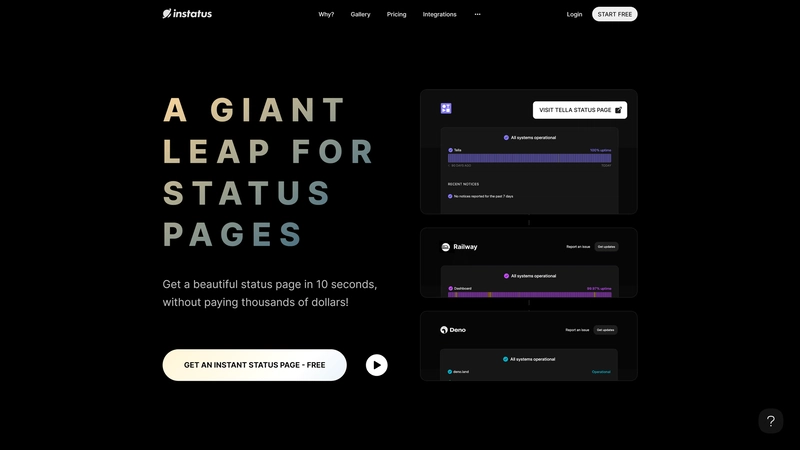
Slick UI and unlimited subscribers, even on the free plan. Instatus makes it easy to launch a beautiful status page on your own domain in just a few clicks. Designed for speed and simplicity, it integrates seamlessly with popular monitoring tools like Datadog, Pingdom, and New Relic.
Instatus also supports automatic updates via Slack, Twitter, MS Teams, and Discord, and can show uptime directly in tools like Intercom.
Pros: Great UX, fast setup
Cons: Only public pages for free users
8. PingPong
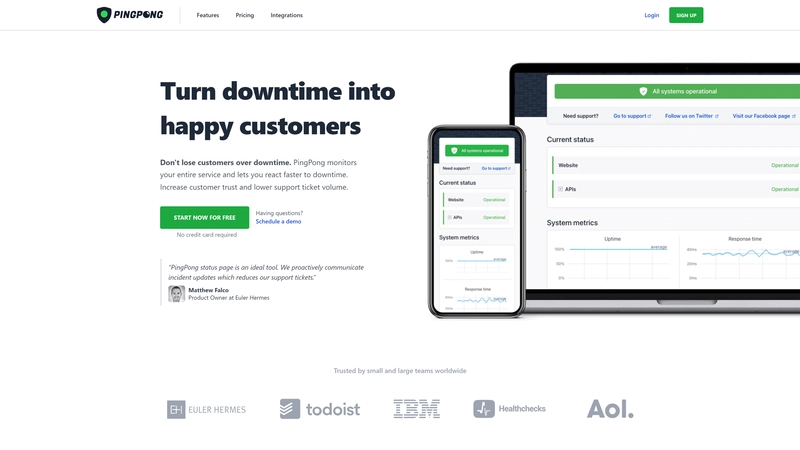
Pingpong is a modern status page platform with an intuitive interface and customizable templates. Pingpong enables users to create branded status pages that integrate smoothly into existing workflows.
Pingpong offers plenty of features on the paid plans, including multi-channel communication API and integration, performance analytics, user-friendly setup, and real-time notifications. It's enough for small teams, but a free status page is limited to your own subdomain with SSL and unlimited incidents.
Pros: Simple, basic solution
Cons: Limited features on a free plan
Open Source Status Page Tools
Want full control? These tools are free forever, but you’ll need to self-host and maintain them.
9. Uptime Kuma
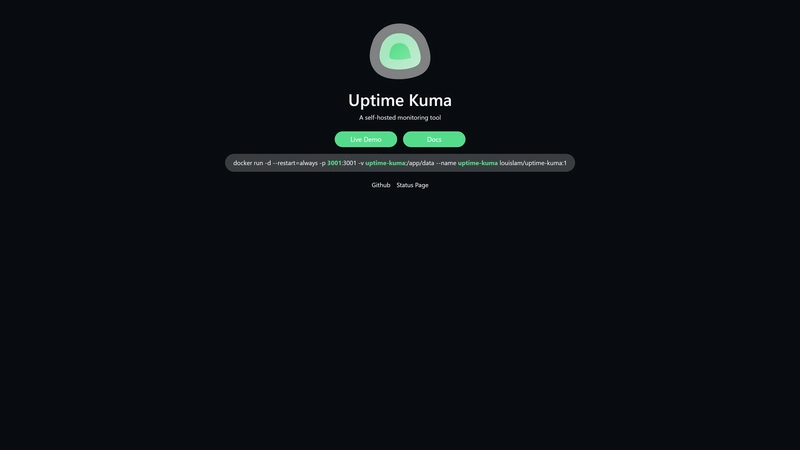
Uptime Kuma has a beautiful UI, simple setup, and is Docker-friendly.
Designed for teams and developers who want full control, it tracks website and service uptime in real-time with support for multiple protocols like HTTP(s), TCP, and ICMP. Its lightweight setup and customizable interface make it a compelling alternative to paid status page providers, especially for those who prefer a hands-on, DIY approach.
The platform includes real-time alerts via email, Slack, Discord, and other channels. It lacks some enterprise-level features, but it's a flexible option at zero cost.
Pros: Fully featured, active community, custom notifications
Cons: No native analytics or historical reporting unless configured
10. LambStatus
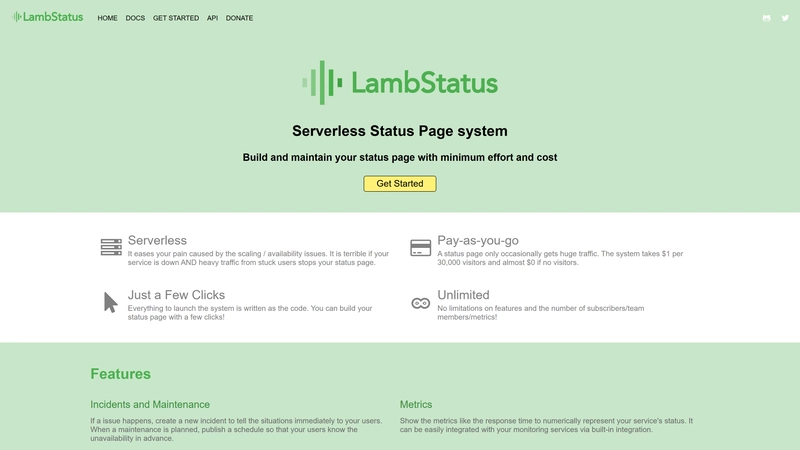
LambStatus is a serverless, open-source status page system. Its architecture ensures your status page remains accessible even during high-traffic incidents.
With deployment handled via infrastructure-as-code, you can get up and running in just a few clicks. It’s also highly affordable—charging only around $1 per 30,000 visitors and nearly nothing when traffic is low.
LambStatus supports incident and maintenance updates, integrates with monitoring tools to display key metrics on the dashboard, and notifies users via email or RSS. However, this customizable status page may require more technical setup and maintenance compared to hosted alternatives.
Pros: Serverless open-source solution
Cons: Not exactly a free solution; users will pay $1 per 30,000+ visitors
11. Staytus
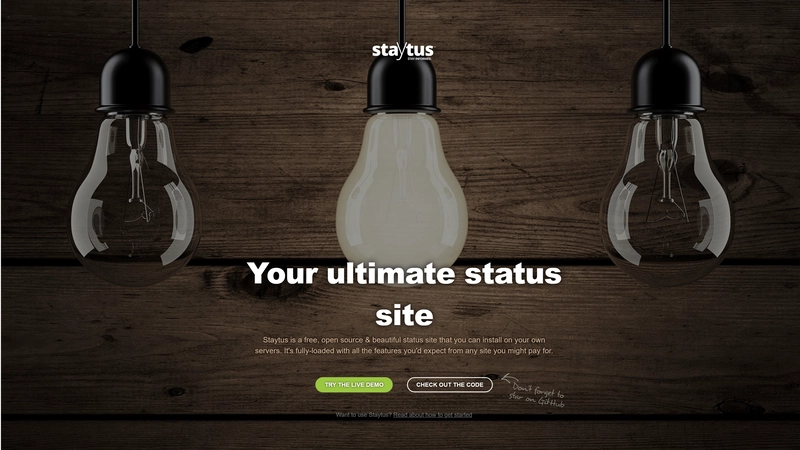
Staytus is a self-hosted status page platform built to help businesses keep their users informed during outages, disruptions, and maintenance events. With real-time updates and built-in incident management, it allows teams to communicate clearly and track issues from start to resolution. The interface is user-friendly and supports full branding customization.
In addition to real-time messaging, Staytus includes features like subscriber notifications via email or SMS, historical incident tracking, and analytics for performance insights.
It also integrates with third-party tools and supports multi-channel communication, ensuring important updates reach your audience wherever they are.
Pros: Functional open-source solution
Cons: Last commit on GitHub was 4 years ago
12. CState
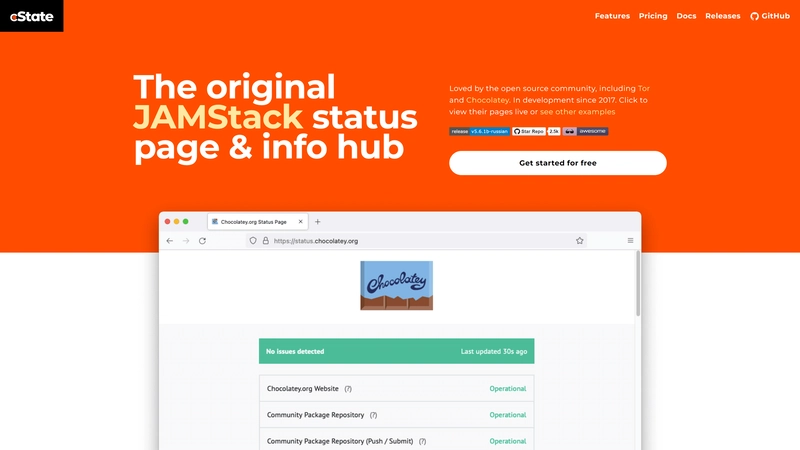
Designed for real-time monitoring and outage reporting, cState allows the creation of branded status pages that clearly convey system health and ongoing issues. CState supports both public and private pages to share updates company-wide or just for internal stakeholders.
Ideal for teams that prefer full control over their infrastructure, CState must be self-hosted, but this also means you get complete customization.
It integrates with popular tools like Slack and Discord and offers automated incident updates via email, SMS, or webhooks. Features multi-provider monitoring, incident timelines, and performance analytics.
Pros: Mobile-friendly solution
Cons: Requires technical know-how to manage and deploy effectively
13. Upptime
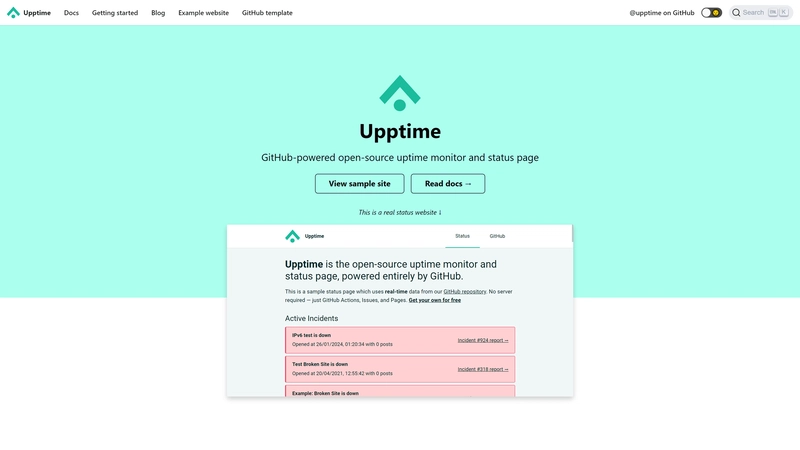
Upptime is an open-source status page tool that runs entirely on GitHub. It uses GitHub Actions to check uptime every 5 minutes, GitHub Issues to log incidents, and GitHub Pages to host your status page.
It's ideal for developers who want a no-cost, low-maintenance solution built right into their existing GitHub workflow. Upptime also supports team notifications and displays response time graphs and incident history out of the box.
Pros: No hosting bills, everything in GitHub
Cons: More DevOps-y setup, not for beginners
14. Vigil
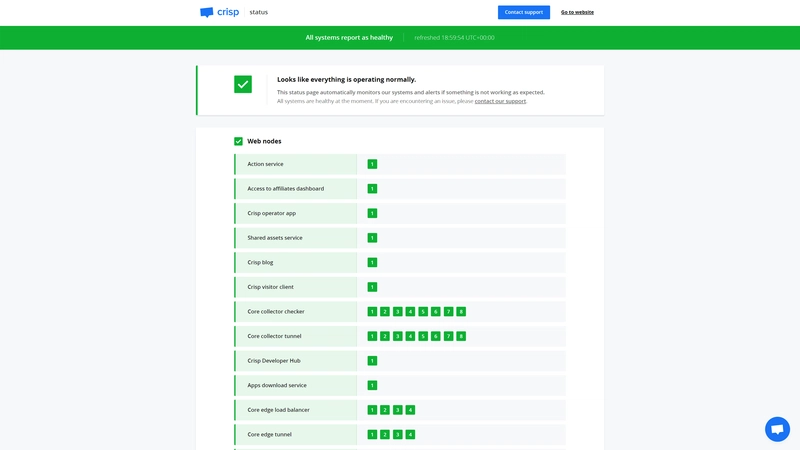
Vigil is minimalistic and CLI-friendly, built for devs who like keeping things lean.
This platform offers create branded, customizable status pages. With support for public and private status pages, Vigil caters to both external transparency and internal operations.
Its mobile-friendly design ensures that teams can manage incidents and communicate updates from anywhere.
The platform integrates with Slack, Discord, and incident management systems, streamlining workflows during critical events. Real-time notifications can be sent through email, SMS, or social media, ensuring broad communication coverage.
Vigil also offers historical reporting and analytics, helping teams identify patterns and improve their response strategies over time.
Pros: Lightweight, fast
Cons: Terminal-based setup, minimal visuals
15. Cachet
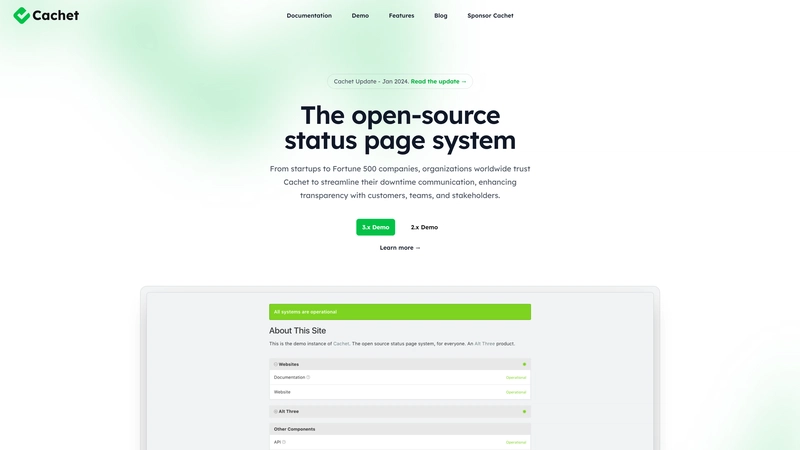
Cachet is a popular open-source status page system with a clean, responsive interface built on Bootstrap. It offers incident tracking, metric charts, and detailed incident timelines. While powerful, it requires a bit of technical setup like PHP, a database, and Node.js to get started.
Cachet supports Docker installations and third-party integrations. It comes translated in 10+ languages, making it a flexible option for developers who want full control over their status page.
Pros: Strong community, customizable
Cons: Requires Laravel/PHP hosting, slower dev updates lately
What to Look For in a Free Status Page Tool
Here are a few key features to prioritize:
- Real-time monitoring (automated if possible)
- Custom branding
- Multiple notification channels (Slack, Discord, email, SMS)
- API support or integrations
- Incident history access
Not every tool on this list hits all the marks, but many come close—especially StatusGator, Uptime Kuma, and Upptime.
Final Thoughts
A status page isn’t just for major outages, it’s a trust-building tool that communicates clearly during chaos. With so many free options, there’s really no reason not to set one up today.
Whether you want something hosted and simple or open-source and fully under your control, this list of status page providers has you covered.
Got a favorite free status page tool I missed? Drop it in the comments!









































































































































































![[The AI Show Episode 144]: ChatGPT’s New Memory, Shopify CEO’s Leaked “AI First” Memo, Google Cloud Next Releases, o3 and o4-mini Coming Soon & Llama 4’s Rocky Launch](https://www.marketingaiinstitute.com/hubfs/ep%20144%20cover.png)



























































































































![[DEALS] The All-in-One Microsoft Office Pro 2019 for Windows: Lifetime License + Windows 11 Pro Bundle (89% off) & Other Deals Up To 98% Off](https://www.javacodegeeks.com/wp-content/uploads/2012/12/jcg-logo.jpg)




























![Is this too much for a modular monolith system? [closed]](https://i.sstatic.net/pYL1nsfg.png)






















































































































_Andreas_Prott_Alamy.jpg?width=1280&auto=webp&quality=80&disable=upscale#)





























































































![What features do you get with Gemini Advanced? [April 2025]](https://i0.wp.com/9to5google.com/wp-content/uploads/sites/4/2024/02/gemini-advanced-cover.jpg?resize=1200%2C628&quality=82&strip=all&ssl=1)













![Apple Shares Official Trailer for 'Long Way Home' Starring Ewan McGregor and Charley Boorman [Video]](https://www.iclarified.com/images/news/97069/97069/97069-640.jpg)
![Apple Watch Series 10 Back On Sale for $299! [Lowest Price Ever]](https://www.iclarified.com/images/news/96657/96657/96657-640.jpg)
![EU Postpones Apple App Store Fines Amid Tariff Negotiations [Report]](https://www.iclarified.com/images/news/97068/97068/97068-640.jpg)
![Apple Slips to Fifth in China's Smartphone Market with 9% Decline [Report]](https://www.iclarified.com/images/news/97065/97065/97065-640.jpg)


































































































































